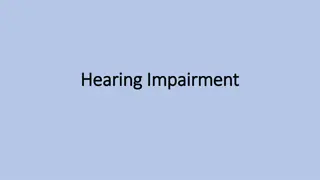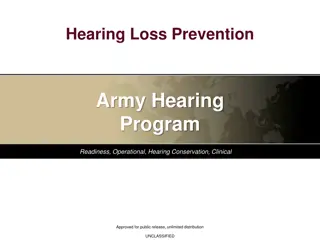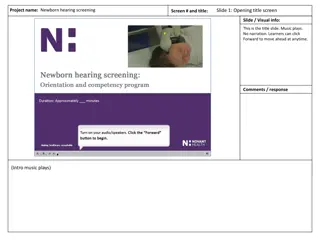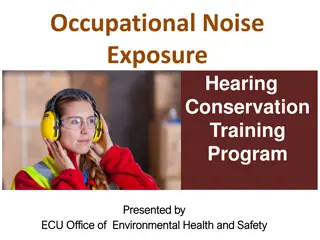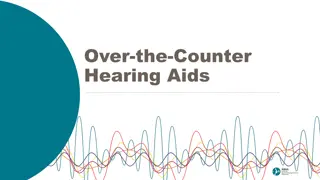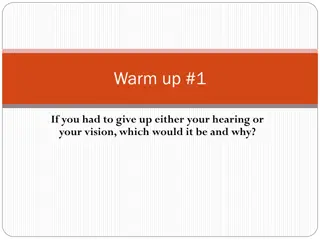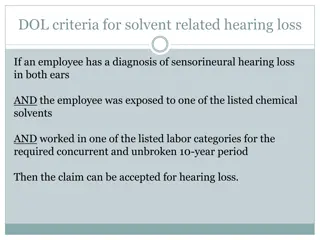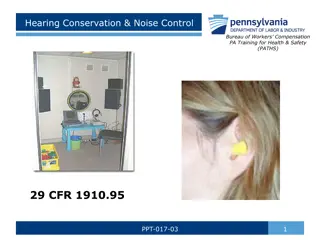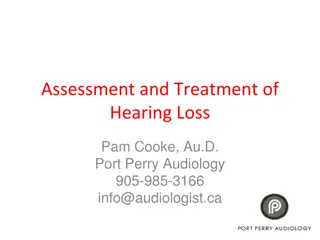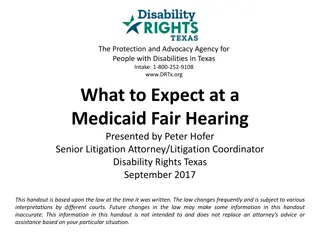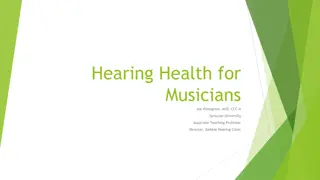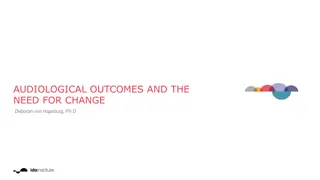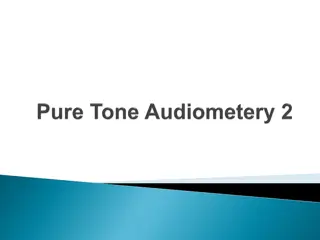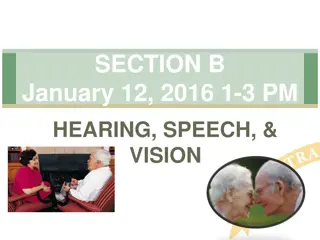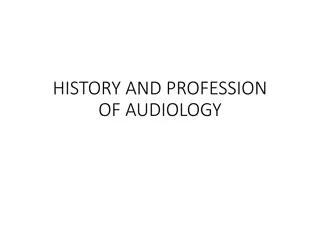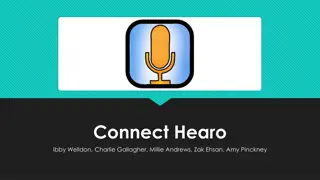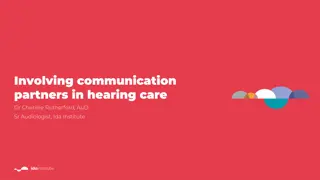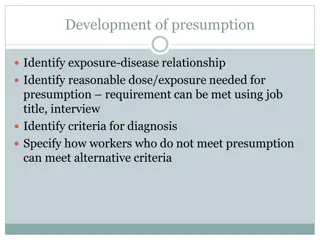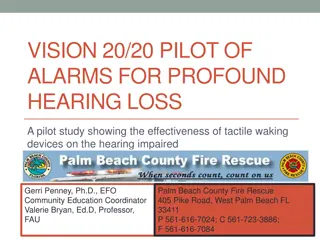Understanding Hearing Protection: Types, Benefits, and Risks
Learn about the importance of hearing protection, the types available such as formable plugs, pre-molded plugs, and earmuffs, why employees may resist using hearing protection, and how exposure to high noise levels can harm your hearing. Discover how to select the right hearing protection to safeguard your hearing health and well-being.
Download Presentation

Please find below an Image/Link to download the presentation.
The content on the website is provided AS IS for your information and personal use only. It may not be sold, licensed, or shared on other websites without obtaining consent from the author. Download presentation by click this link. If you encounter any issues during the download, it is possible that the publisher has removed the file from their server.
E N D
Presentation Transcript
HEARING PROTECTION Protecting against the hazards of unsafe noise levels Information provided for UAC members by the Georgia Urban Ag Council and Snellings Walters Insurance Agency
Objective To know the effect of noise on hearing and to practice proper protection against unsafe noise levels Information provided for UAC members by the Georgia Urban Ag Council and Snellings Walters Insurance Agency
Why employees resist Many employees think they just don t need hearing protection. Hearing loss is gradual. By the time some hearing is lost, it may be too late. They think the protection will be uncomfortable. Information provided for UAC members by the Georgia Urban Ag Council and Snellings Walters Insurance Agency
Types of hearing protection Formable Plugs Spongy, soft compressed or shaped prior to insertion Expandable to provide a snug fit Disposable, not for reuse Information provided for UAC members by the Georgia Urban Ag Council and Snellings Walters Insurance Agency
Types of hearing protection Pre-molded Plugs Soft flexible material preformed to fit Must be fitted (sized) for each ear Designed for reuse, must be washed Good choice when protection is needed on a regular basis Information provided for UAC members by the Georgia Urban Ag Council and Snellings Walters Insurance Agency
Types of hearing protection Earmuffs Adjustable headband with soft cups and cushions that seal around the ear May be worn over plugs May be more comfortable for longer periods, but should not be worn with eyeglasses or any other obstruction that will reduce their effectiveness Information provided for UAC members by the Georgia Urban Ag Council and Snellings Walters Insurance Agency
How noise can hurt you Too much exposure can result in stress, from constantly straining to listen and be heard Can cause you to miss important safety instructions Prolonged exposure can result in permanent hearing loss Even if exposed for only a short time, you may temporarily lose your hearing Information provided for UAC members by the Georgia Urban Ag Council and Snellings Walters Insurance Agency
Is noise hurting you? You may have a problem if: You hear ringing or other noises You have a hard time hearing people when they talk to you You are unable to hear high pitched or soft sounds If you experience any of these problems, tell your supervisor. Your hearing may need to be tested. Information provided for UAC members by the Georgia Urban Ag Council and Snellings Walters Insurance Agency
IMPORTANT Becoming accustomed to loud noise is a sign of gradual hearing loss Information provided for UAC members by the Georgia Urban Ag Council and Snellings Walters Insurance Agency
What is noise? Noise is defined as sounds people prefer not to hear Noise is dangerous in the workplace because it interferes with communication and concentration Sound is measured by decibels Noise that is 85 decibels or greater can affect your hearing if you work around it more than eight hours a day Information provided for UAC members by the Georgia Urban Ag Council and Snellings Walters Insurance Agency
Examples of noise levels Chicken coop Conversational voices 60-70 decibels Tractor idling Conveyers 80 decibels Diesel trucks Power lawn mowers 95 decibels Power tools 100 decibels Information provided for UAC members by the Georgia Urban Ag Council and Snellings Walters Insurance Agency
Reducing noise levels Protective covering or insertions in the ears reduces noise levels to the inner ear Use hearing protection when noise exposure cannot be controlled adequately by environmental changes, such as moving farther away from the noise Hearing protection should be worn when noise levels exceed 85 decibels Information provided for UAC members by the Georgia Urban Ag Council and Snellings Walters Insurance Agency
Getting the best protection Protection depends on the seal between the skin and the hearing protector Caution: protectors can become loose and create leaks even from just talking or chewing - resulting in no protection Earplugs should be made of a soft material, such as neoprene Earplugs should be properly designed, well-fitted, and clean Information provided for UAC members by the Georgia Urban Ag Council and Snellings Walters Insurance Agency
Noise reduction rating (NRR) Not all materials can block the same amount of sound The manufacturer indicates how much noise (decibels) the hearing protection device blocks This is called the noise reduction rating (NRR) For general use, look for a NRR of 25 or greater Information provided for UAC members by the Georgia Urban Ag Council and Snellings Walters Insurance Agency
Review Sound that exceeds 80 decibels can cause hearing loss Protection depends on the seal between the skin and the ear protector Hearing protection must be worn properly Workers experiencing head noise or ear ringing might be exposed to too much noise and should take precautionary measures Information provided for UAC members by the Georgia Urban Ag Council and Snellings Walters Insurance Agency



